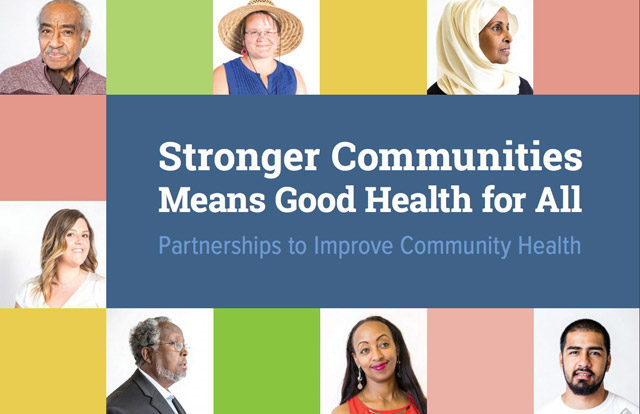The Seattle-King County region has become ground zero for a widening gap between the haves and the have-nots. Average household income in one neighborhood can be $100,000 less than in one just a mile away. Poverty rates can range from 6% to 54% by neighborhood. King County’s lowest income neighborhoods may live ten years shorter than in the highest income neighborhoods.
Addressing these health disparities has been at the heart of Public Health – Seattle & King County’s work for many years. Resource Media recently worked with Public Health, Seattle Children’s and the Healthy King County Coalition, to tell the stories of the community groups who are working to reduce those health disparities in King County. And, to provide them communications training and capacity to continue their work benefiting people who face the highest risks from serious health issues that can be prevented through healthy eating, active living and tobacco cessation.
Partnerships to Improve Community Health (PICH) puts diverse community organizations at the forefront, so it was important for their communications efforts to sensitively and effectively cater to a number of different audiences, both in terms of accurately representing the people of color who are leading this work, as well as ensuring access to their members of the community. To do this, Resource Media created a multicultural transcreation process that did more than simply translate English text into the target language. Resource Media held listening sessions and looked for opportunities to customize content to better meet the needs and contexts of diverse communities, through different messaging, photos, sound bites and graphics.
A multicultural communications strategy can be pervasive in projects from start to finish. Here are our top seven best practices that we used throughout the PICH project:
- Smash the patriarchy: Because of the funder-community grant setup of the program, there was an inevitable power dynamic between the County and its grantees. There was a conscious effort to challenge this dynamic by spotlighting communities, and their stories first. Ultimately, this wasn’t about ego stroking, it was about giving groups communications tools to build capacity.
- Know the implications of association: Here’s the dilemma: how do you visually portray health disparities without laying blame on specific groups for being the source of the problem? We avoided over-associating stats with specific groups by using graphics that portrayed our entire, diverse community.
- Let the stories take the lead: When deciding which projects, communities and languages to focus on for translation and transcreation, we could have simply chosen the top four most-spoken languages in King County. But since this project relied so much on storytelling and highlighting specific sectors of the PICH work, we prioritized a project’s story quality, and then surrounded those projects with a multicultural approach. Resource Media was fortunate in that almost all projects within this body of work were with diverse communities.
- Make second language ability a strength, rather than a barrier: When it comes to choosing spokespeople and stories for videos, oftentimes English language learners are passed over for more fluent communicators and as a result their stories are not told. With concerted effort to find interpreters in the community and budget invested in translation, these powerful spokespeople can reveal untold stories, and reach new audiences.
- Go beyond translation: Resource Media has the most in-house cultural and linguistic expertise for Spanish language, so when it came to transcreating our infographic, we pulled together Latino staff to discuss how the English content should be adapted for Spanish speaking audiences. We explored whether certain ideas, like ‘equity,’ ‘affordable,’ ‘advocate’ and ‘covenient’ held different meaning for Spanish-speaking immigrant communities. Embedded in those different perceptions were different economic realities for white and Latino communities, as well as an openness to discuss ideas of discrimination and injustice, over more aspirational ideals such as equity.
- Use community resources: For our Somali translations, we could have very easily gone to a translation house, but instead we chose to go to the editor of the local Somali newspaper Runta News, who also provides translation services, considers it a passion and a line of business. They were familiar with the Somali Grocers program work that we were writing about, and were better judges of what was needed by the local Somali community, in terms of education level and cultural context.
- Assign value to people’s time: We knew that the makeup of these groups was not the standard 9-5, salaried office worker. Oftentimes their work with these community groups is just one job that they have, and they are traveling all over the region for work, school, childcare, etc. To take this into account, Resource Media set aside project budget to pay each participant for their time spent at listening sessions and in photo shoots.
It was gratifying to work on these projects over the course of 2017, which let us taste Iraqi food at a community kitchen in Seatac, double dutch on a track in Rainier Beach, and watch preschoolers play in the Central District. Here are just some of the projects that we produced:
If you’d like to learn more about our process and the PICH project, please contact me!

